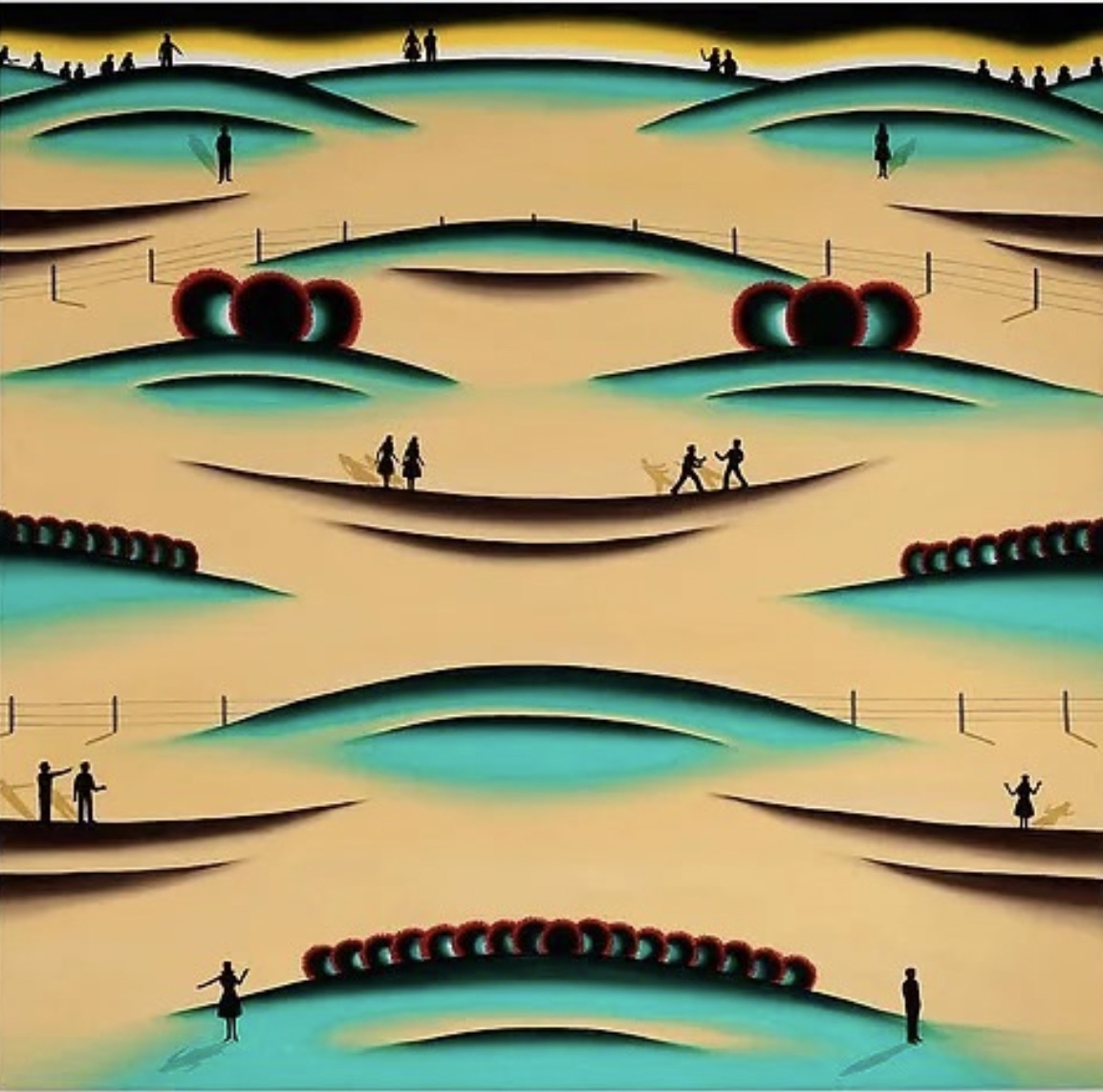Recent Posts
OPTIMA LAKEVIEW

At Optima®, we believe that art has the power to transform, inspire, and enrich lives. Whether it’s through the bold design of our buildings, the curated art displayed in our communities, or the vibrant cultural resources around us, we are deeply committed to celebrating creativity. The Chicago Imagists, a groundbreaking group of artists who emerged in the 1960s and 1970s, perfectly embody this spirit. Their fearless exploration of unconventional themes and styles reshaped the art world with their vibrant, surreal, and often humorous works, leaving a profound impact on contemporary art, and making their story a perfect fit for our continued exploration of art and innovation.
Who Were the Chicago Imagists?
The Chicago Imagists were a loosely associated group of artists connected through their studies at the School of the Art Institute of Chicago (SAIC). Their work was united not by a single aesthetic but by a shared spirit of independence, curiosity, and an embrace of the unusual. While New York and Los Angeles dominated the contemporary art world at the time, the Imagists rejected the prevailing trends of minimalism and abstraction, opting instead for a highly personal, narrative-driven approach.
Under the mentorship of SAIC teacher and painter Ray Yoshida, these artists explored unconventional sources of inspiration, such as comic books, outsider art, advertisements, folk art, and popular culture. Their works were often infused with bold colors, whimsical patterns, and a surrealist bent, reflecting both the cultural zeitgeist and their distinct Midwestern perspective.
The movement had its roots in 1966 with the influential Hairy Who exhibition at the Hyde Park Art Center in Chicago. Organized by artists Jim Nutt and Gladys Nilsson, the exhibition’s name became synonymous with the group’s subversive, whimsical, and highly stylized approach to art. As the movement grew, it expanded to include several other factions of Imagists, including the Nonplussed Some and the False Image groups.
Their works drew inspiration from an eclectic mix of influences — comic books, advertisements, folk art, vernacular signage, and outsider art — often creating bold, vibrant pieces that celebrated the eccentric and unconventional.
The Hallmarks of Chicago Imagist Art
One of the defining characteristics of the Imagists’ work was its eclectic and irreverent approach to art-making. Their pieces were often described as playful, grotesque, and deeply imaginative, blurring the lines between high art and low culture. This celebration of unconventional beauty and humor set them apart from the art movements dominating other major cities.
For many Imagists, the human figure was a recurring motif — distorted, exaggerated, or abstracted in unexpected ways. Their art embraced the grotesque and the fantastical, with a focus on storytelling and psychological depth. Unlike the impersonal works of minimalism or conceptual art, Chicago Imagist pieces often invited a deeply personal and emotional response.
Key Figures in the Movement
Though the Chicago Imagists worked independently rather than as a formal group, several artists became synonymous with the movement. These trailblazers include:
- Roger Brown: Known for his paintings with stylized landscapes and iconic, almost cinematic scenes.
- Sarah Canright: Her work focuses on figurative compositions with a sophisticated use of texture and color.
- Ed Flood: Renowned for layered and reflective works that combined abstraction with pop culture elements.
- Christina Ramberg: Famous for her meticulous depictions of corseted figures, often exploring themes of restriction and transformation.
- Phil Hanson: Created dreamlike imagery, combining personal iconography with intricate patterns.
- Gladys Nilsson: Known for vibrant watercolor pieces with whimsical, fluid figures.
- Jim Nutt: Produced surreal, intricately detailed portraits with a dreamlike quality.
- Ed Paschke: His neon-lit paintings explored media, fame, and cultural iconography.
- Barbara Rossi: Focused on intricate, surreal works that blend color, humor, and spirituality.
- Suellen Rocca: Known for playful compositions incorporating pop-culture imagery and personal symbolism.
- Karl Wirsum: Celebrated for his cartoon-inspired characters and graphic, vibrant style.
- Ray Yoshida: Created works combining comic book fragments and other everyday materials, often blurring the line between high and low art.
Together, these artists formed a collective that challenged the norms of contemporary art, delivering works that were as personal as they were visually striking.
Legacy and Influence
The Chicago Imagists left an enduring legacy that continues to inspire artists today. Their works challenged traditional notions of what art could be and opened the door for a more inclusive and experimental approach to artistic expression. Their influence can be seen in contemporary movements that celebrate vibrant colors, bold narratives, and a synthesis of high and low culture. In addition, their impact is felt throughout Chicago’s vibrant art scene, including institutions like the Art Institute of Chicago and the Museum of Contemporary Art, which regularly feature their works. The Imagists also paved the way for Chicago to be recognized as a center for innovative art-making, offering a distinct alternative to the art capitals on the coasts.
Discover the Chicago Imagists
The Chicago Imagists remind us that great art is not bound by convention but thrives when it embraces imagination and risk. Whether you’re a lifelong Chicagoan or new to the city, exploring their visionary works is a chance to connect with the creative pulse of this vibrant metropolis.
For Optima® residents, the creative legacy of the Chicago Imagists offers inspiration and a deeper connection to the cultural richness that surrounds our communities. Their work is a testament to the power of individuality and imagination, qualities we celebrate in every aspect of Optima’s design philosophy.
Interested in learning more? Read the thoughtful essays by curators Lynne Warren, Stephen Fleischman, and Richard H. Axhom here.

